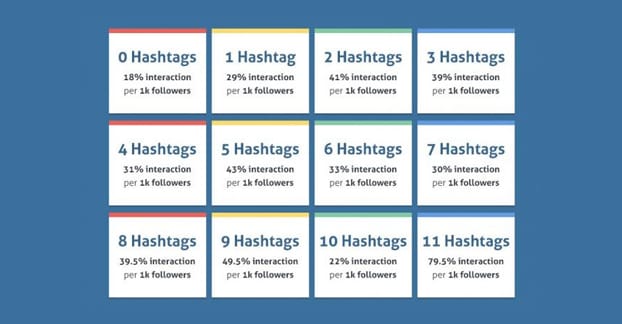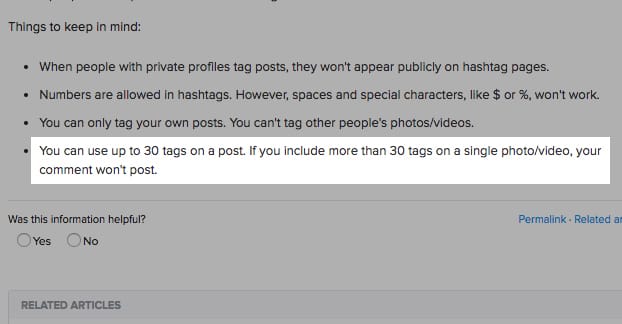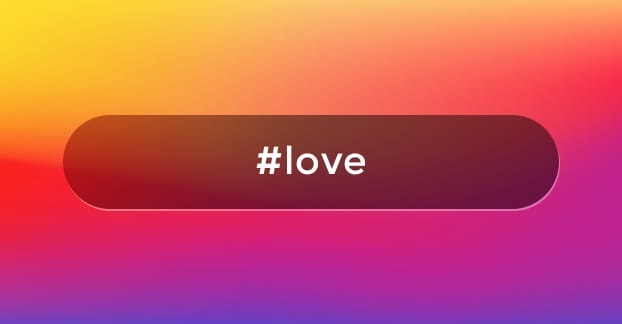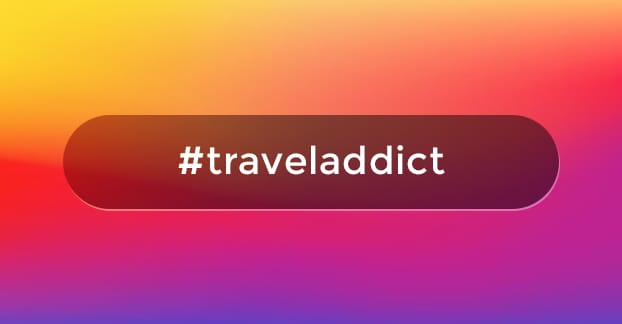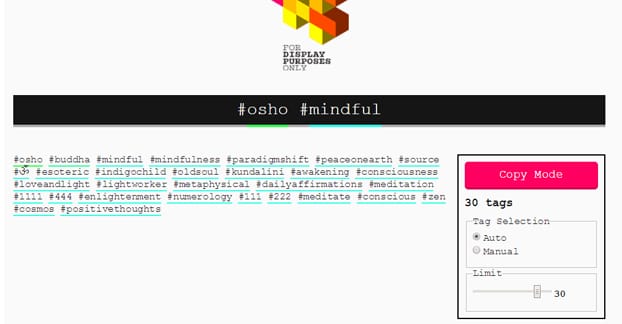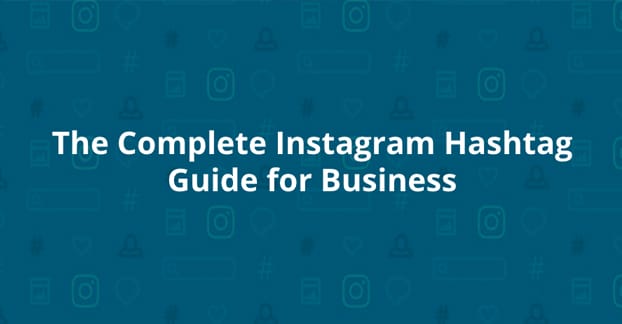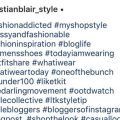Hashtags are a way to sort, categorize, and discover content on a social network like Instagram or Twitter. For example, I could categorize this post using hashtags like #hashtags, #Instagram, #social_media, #guides, and so forth. Then you could go to something like follows.com/tag/Instagram and see all of the posts tagged #Instagram.
In fact, this blog actually does something similar, with CMS category tagging. You can see the Instagram category here. It’s similar to how a hashtag would work, but it isn’t strictly hashtags.
So why should you use hashtags? A huge portion of the Instagram audience browses the site via hashtags. They might look to see all the posts in grayscale, their favorite artistic style. They might want to see if there are any up and coming models to watch. They might want to see if anything interesting is going on in Houston. You know, that kind of thing.
People use hashtag browsing to find new content, to find content similar to the content they like, and to follow creators. Hashtags can also be used to enter and follow contests run by individuals and businesses, adding another layer of potential utility to them.
So using hashtags on your photos allows you to proliferate your branding, reach wider audiences than just the people who follow you, and become part of geographic feeds you don’t otherwise get to access. According to a 2014 study, using just one hashtag would get you as much as 12.6% more engagement than using none.
So if hashtags increase engagement and discoverability, obviously you want to use them. So there are two questions related to each other here. One is “how many CAN I use?” The other is “how many SHOULD I use?”
As far as hard limits imposed by Instagram are concerned, you’re limited to 30 hashtags. That’s it, that’s the limit. If you try to include more than 30 hashtags in your post’s description or in a comment, it won’t post until you remove some.
How many hashtags should you use, though? We all know that just because you CAN do something doesn’t mean you should do it to the max. You can post once an hour on Facebook but if you do, you’ll quickly destroy your following.
Interestingly, a study from TrackMaven indicates that it doesn’t really matter if you over-do it with hashtags. It’s sort of a commonly accepted practice, so as long as your actual plain English caption is above the hashtag block, people will tune it out. You get all the benefits of showing up in those tag feeds without the drawbacks of a spammy description.
Hootsuite recommends using the full 30 some of the time, but not all of the time. Essentially, if you can think of 30 niche tags that work for your post, go for it. If you have to resort to a bunch of the heavily-trafficked, heavily-spammed tags, you might just end up with engagement from spammers that doesn’t do you any good.
So now the question becomes, how do you find the right kinds of hashtags to use?
Before you can get into picking specific hashtags, you need to learn about the categories of hashtags. Different people will categorize hashtags in different ways, but I like to break things down into three main groups.
Branded Hashtags are the first category and are generally the most narrow, the least useful, and also very important. These are the hashtags that have something specific to do with your brand but not other brands. They’re something users can use to engage with your brand rather than a wider audience as a whole. They’re tags you can use to track contests, tags you can use to accompany ad campaigns, and tags you simply include in everything you post.
You can divide this up into four sub-categories.
- Basic Branded Tags. These are tags that just use your brand name. #Starbucks is a branded tag for the coffee chain, but that’s it. It has no added purpose or value other than to attach a name to a post.
- Ad Campaign Tags. These are hashtags that tie in with a specific ad campaign you’re running. The Nike #FindYourGroove tag would fall into this category.
- Contest Tags. These are tags that a user has to use to enter a contest. If you’re asking for engagement or for submissions for a contest, a specialized tag that’s unique enough to avoid common usage works here.
- User Engagement Tags. These are tags like the Starbucks #BaristaOriginals example; something Starbucks fans can use to submit content to Starbucks, but which isn’t general enough to attract a wider audience of unrelated posts.
The key component of all branded hashtags is that they have something to do with your brand specifically and not with your wider industry. They’re unique to you, under your control, and relevant solely to your brand.
General Hashtags are the second category. The majority of hashtags fall into this category, though I make a further subdivision for the third category that some other people do not. Essentially, these are hashtags that have broad application to the world at large, and that’s about it.
Consequently, these tags are usually extremely popular, which is a double-edged sword. On the one hand, a post in a hashtag with millions of followers has the potential to get thousands upon thousands of views in a matter of minutes after it’s posted. On the other hand, the sheer crush of thousands of people using that tag at any given time means your content has only the briefest exposure in the feed before it’s pushed so far down no one will see it.
Generalized hashtags are things like #cute and #cats and #fall. They have to do with the world at large, broad categories of content, and nothing more.
Specific Hashtags are my third category, and make up the bulk of hashtags in my mind.
Technically they’re all more general hashtags than branded tags, but I consider it to be the middle of the road category. They’re the ideal, because they’re where the majority of your viewers will come from. They have fewer posts and viewers than general hashtags, but the lighter press of content means you can get more exposure for a longer period of time before your post falls off the feed.
Specific hashtags can be broken up into a handful of sub-categories as well.
- Product Tags. Starbucks uses these a lot in their posts. Take a picture of a reindeer pop and tag it #ReindeerPop. Take a picture of a black and white mocha and tag it #BlackAndWhiteMocha. Whenever you feature a product in an image, you can make a tag for that product.
- Image-Specific Tags. These are tags that are relevant to the image in other ways. There’s some overlap here between general and specific tags, actually. Something like #NoFilter is a general tag and is image-specific. Something like #Bridge for a picture of a bridge is more image-specific and less general, since there are comparatively few people who care about bridges enough to browse that hashtag.
- Industry Tags. These are tags relevant to your industry as a whole, but not to the world at large. Something like #Cycling is relevant to everyone who likes to go out and bike around, whether they do mountain biking, commuting, or long distance racing.
- Niche Tags. These are like sub-tags of the industry tags. If your industry is fitness, a sub-tag might be #Zumba, and a sub-sub-tag might be #ZumbaDancer. They’re just increasingly narrow applications of tagging where you still might have exposure to an audience.
- Community Tags. These are tags relevant to a specific community. On a broad scale, something like #BLM is a community, though it’s a complex political tag and social movement. On a smaller scale, something like your local #DistrictPTA might be relevant.
- Geolocation Tags. #Houston, etc. A tag for the location where you were when you took the photo. Geolocation tags are best used when they’re exotic compared to your usual location, or when your location is a point of community pride.
As you can see, there’s a lot of bleed-through between categories. The truth is, every individual tag can fall into multiple categories. A very successful branded tag can be turned into a more generic tag. Geolocation tags for some broad areas can be general tags, as can some industry tags for larger industries. It all comes down to perspective.
So what is an ideal spread of hashtags? You have 30 slots to work with, so you should make use of them in a varied way. There are no hard and fast rules, but I would say that the majority of your tags are going to be specific hashtags.
In general, out of your 30 hashtags, I would say no more than 2-3 branded tags go on any given image. #Starbucks #RainbowFrap is two, and leaves space for a third if you have a contest associated with the content in some way..
That leaves, say, 28 tags remaining. Of those, maybe five of them should be broadly general tags. #Coffee, #fall, #morning, #commute, #ratrace all work for an image focused on buying your morning coffee on your commute to work.
This leaves 23 more tags to go. How do you fill out those tags? They’ll all be specific tags, so you can break it down further. Let’s do an easy one and dedicate one tag to your geographic location, so something like #Seattle.
With 22 left, you have a lot of leeway. Add one for the Instagram filter you’re using. Add a few that are related to your industry, and a few more related to your niche. Add some for your community, if you have a dedicated community. There’s a lot of flexibility here.
Identifying Good Tags
There are a lot of ways you can pick tags you want to use. Hootsuite has a guide that, part way down, has a list of tags like #instagood and #IGers, which are general tags you can use. In fact, there are a lot of guides out there to finding specific tag lists you can use, but keep in mind; those lists are used by a lot of people, so if you want to stand out to audiences that don’t get that kind of attention, you need to find other tags to use.
You can also use tools to do some research for you. Much like keyword research, you plug in a hashtag keyword you want to use, and a tool will tell you about it. Hashtagify is one of my favorites. They’ll show you other related hashtags in a word cloud based on the usage of those tags. They’ll show you influencers using those tags, content and popularity of those tags, and trends for those tags. You can find a lot of related tags and expand out from there.
I recommend keeping a spreadsheet of hashtags you might want to use, along with some basic data about them. In particular, keep an eye on the volume of the tags and how often you use them. You may be able to spot some correlations between specific tags and engagement.
It’s a lot of work, but once you have your document down, you have a resource for both keyword research and hashtag usage that you can carry forward for years. It’s a worthwhile investment.
